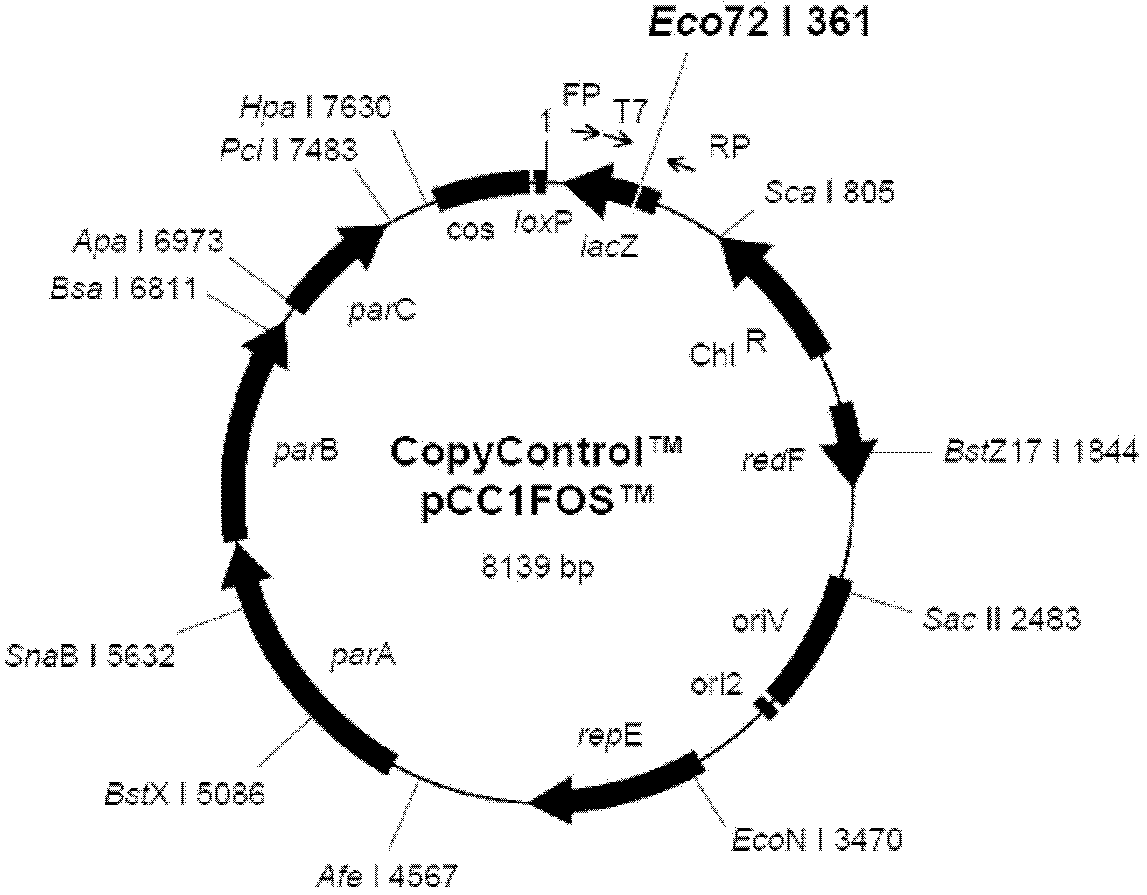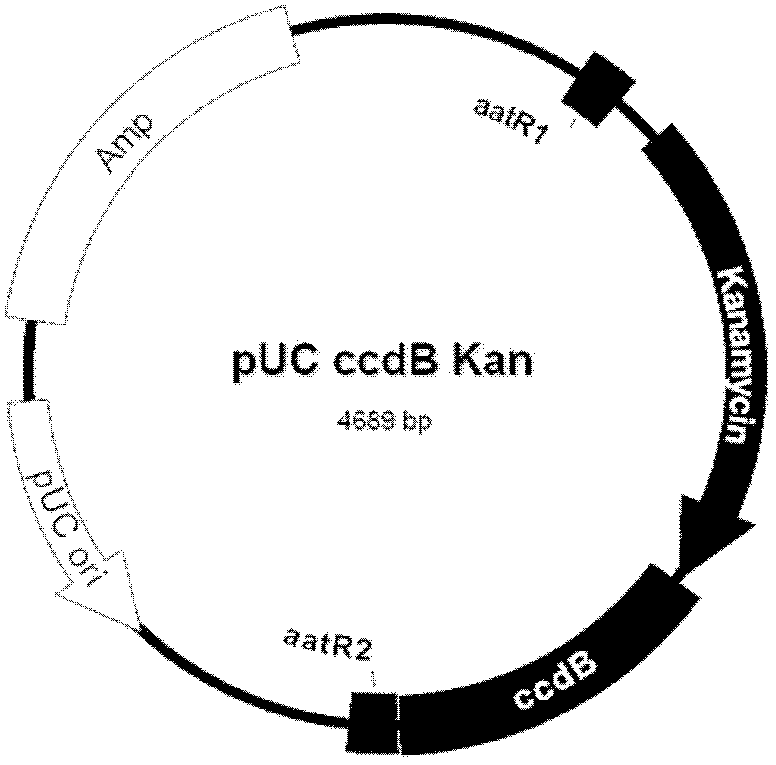Construction and application of recombinant duck viral enteritis virus vaccine for expressing secretory duck Tembusu virus M/E protein
A technology for duck tembusu virus and duck virus enteritis, which can be applied in the directions of virus/phage, application, antiviral agent, etc., and can solve the problems of large workload, low efficiency, unclear classification, etc.
- Summary
- Abstract
- Description
- Claims
- Application Information
AI Technical Summary
Problems solved by technology
Method used
Image
Examples
Embodiment 1
[0049] Example 1. Construction of Genomic Fosmid Library of DEV Vaccine Strain
[0050] The Fosmid library of DEV genome was constructed according to the "CopyControl Fosmid Library Production Kit" kit instructions of EPICENTRE.
[0051] The method is as follows: DNA of DEV vaccine strain virus (CVCC AV1222) (GeneBank EU082088) (China Veterinary Microbial Culture Collection and Management Center, catalogue number AV1222; purchased from China Veterinary Drug Administration) DNA was prepared by physical method using a 25-gauge needle (purchased from Shanghai Zhiyu Medical Instrument Co., Ltd.) aspirated for several times to cut the DNA fragments. T4 DNA polymerase (T4 DNA Polymerase, purchased from New England Biolabs) and alkaline phosphatase (Alkaline Phosphatase, purchased from New England Biolabs) were used to treat the DNA fragments. End smoothing and dephosphorylation, pulse electrophoresis (with Bio-Rad's CHEF The XA Pulsed Field system performs pulse electrophoresis. T...
Embodiment 2
[0052] Example 2. Selection for rescue of DEV virus cosmids
[0053] After the library was successfully constructed, 286 clones were picked to extract the cosmid, and the alkaline lysis method was used to extract the cosmid. [5] The cosmids were extracted and sent to Dalian Bao Bio Co., Ltd. to sequence the ends of the DEV DNA fragments inserted into pCC1 Fos. The sequences of the sequencing primers are as follows:
[0054] Primer 1: 5'-TAATACGACTCACTATAGGG-3'
[0055] Primer 2: 5'-GCCAAGCTATTTAGGTGAGA-3'
[0056] After end-sequencing analysis, a total of 250 clones with complete Fse I-SbfI-Pme I linkers connected to both ends of the insert were obtained. Sets of 5 cosmid combinations for DEV rescue were selected from these 250 clones. Both ends of the cloned DEV DNA fragments in each group contain Fse I-Sbf I-PmeI linkers, which can overlap each other and cover the entire DEV genome.
Embodiment 3
[0057] Example 3. Virus rescue
[0058]The DNA of the selected cosmids was extracted with the Qiagen company's medium volume extraction kit. Selected cosmids were linearized with Fse I, Sbf I or Pme I endonucleases (all purchased from New England Biolabs) under the following reaction conditions: Sbf I endonuclease 20U (Fse I or Pme I can also be used endonuclease), 10 μg of cosmid, treated at 37°C for 1 hour, extracted with phenol / chloroform, and precipitated with ethanol to prepare DEV DNA for transfection.
[0059] According to the calcium phosphate method of Reddy SM (2002), 5 segments of DEV DNA were co-transfected into secondary chicken embryo fibroblasts (CEF) [28] , after many repetitions, 3 groups of 5 cosmid combinations were transfected 4-6 days after the typical lesions of DEV virus were seen in CEF, and a group of 5 cosmid combinations with better repeatability was selected for subsequent experiments. The virus rescued by co-transfection of this set of 5 cosmids ...
PUM
 Login to View More
Login to View More Abstract
Description
Claims
Application Information
 Login to View More
Login to View More - R&D
- Intellectual Property
- Life Sciences
- Materials
- Tech Scout
- Unparalleled Data Quality
- Higher Quality Content
- 60% Fewer Hallucinations
Browse by: Latest US Patents, China's latest patents, Technical Efficacy Thesaurus, Application Domain, Technology Topic, Popular Technical Reports.
© 2025 PatSnap. All rights reserved.Legal|Privacy policy|Modern Slavery Act Transparency Statement|Sitemap|About US| Contact US: help@patsnap.com



